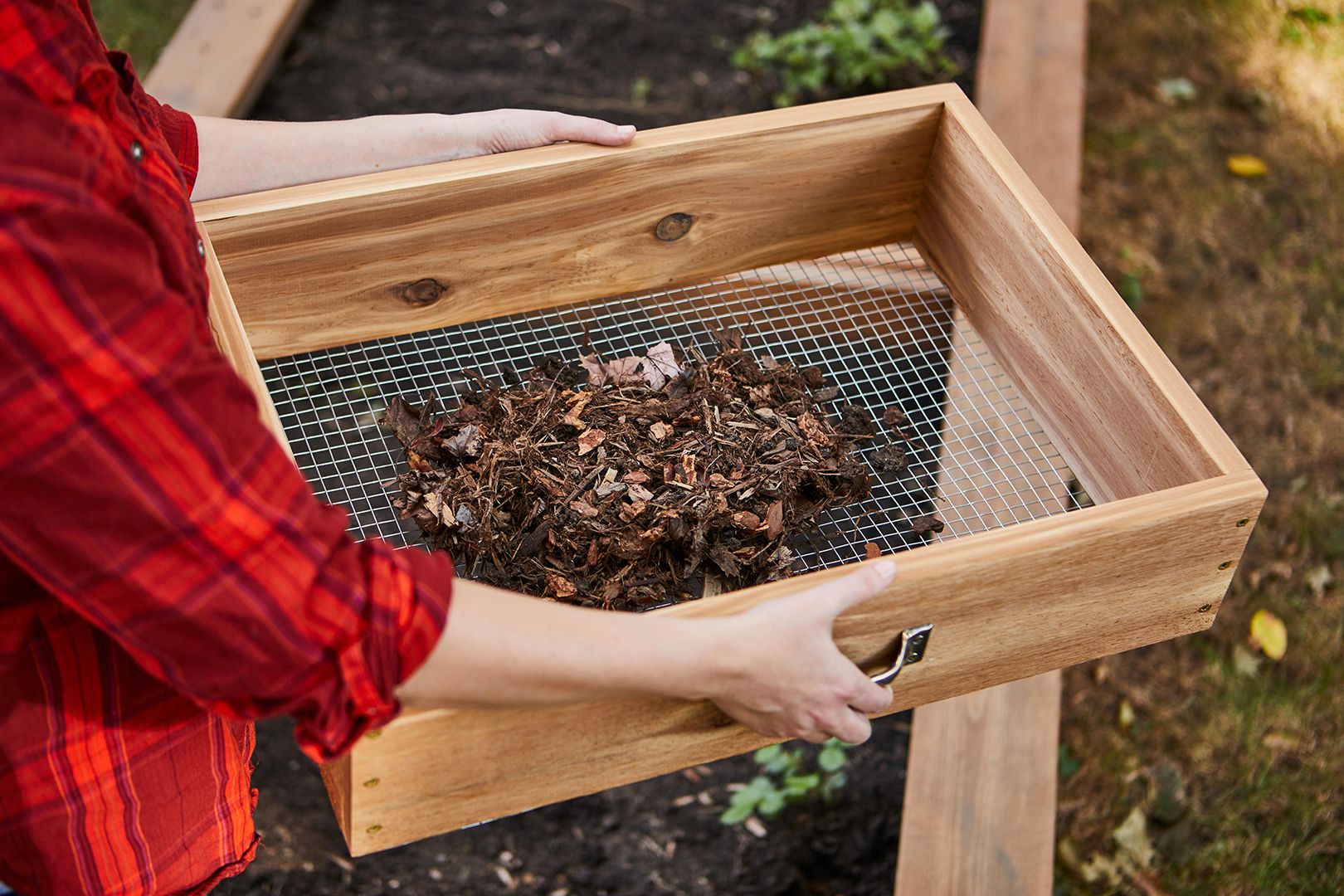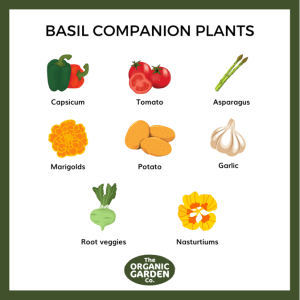To make a soil sifter box for healthy compost, build a wooden frame and attach a wire mesh. Ensure the mesh is secure to filter out uncomposted materials effectively.
Creating a soil sifter box is a simple yet impactful gardening project that enhances the quality of your compost by removing larger, Uncomposted materials. Garden enthusiasts and eco-conscious individuals understand that fine compost is crucial for plant health and soil improvement.
With this handy tool, you can easily separate coarse leftovers from the rich, ready-to-use organic matter that nurtures your plants. By implementing a soil sifter in your composting routine, you enrich your garden with nutrients and foster a more sustainable gardening practice.
As part of your compost system, a soil sifter box streamlines the process of producing high-quality compost, contributing to a thriving, eco-friendly garden.

Credit: www.amazon.com
Introduction To Composting And Soil Health
Embarking on the journey of composting transforms kitchen scraps and yard waste into gold for your garden. Composting is a cornerstone of organic gardening, enriching soil health and giving plants the nutrients they need to thrive. But it’s not just about piling up organic matter and hoping for the best; fine-tuning your compost yields remarkable benefits for your soil.
The Role Of Soil Sifting
Picture your garden thriving with robust plants in a bed of rich, dark soil. Soil sifting plays a key part in this vision. When we sift soil, we remove larger debris, leaving behind a fine, crumbly material. This process ensures roots can easily navigate the earth and access essential nutrients.
Benefits Of Fine-tuning Compost
Turning your compost into a fine, nutrient-rich amendment is a game-changer for your garden. The benefits are manifold:
- Improves soil structure – making it easier for plants to grow.
- Enhances nutrient content – providing your plants with a balanced diet.
- Makes roots stronger – by fostering a nurturing environment for growth.
- Suppresses plant diseases – healthy plants can fend off illness better.
/compost-on-grate-42cd11a8-c97abcc6b3ef4a26b0e90480ef73ee87.jpg)
Credit: www.bhg.com
Designing Your Soil Sifter Box
A soil sifter box is a must-have for gardeners seeking to create nutrient-rich compost.
Designing the perfect sifter involves two crucial steps:
determining its size and choosing suitable materials.
These guidelines will ensure you build a sifter that meets your gardening needs.
Determining The Size
The size of your soil sifter should match your composting volume.
Consider the quantity of soil you plan to sift regularly.
- Small gardens benefit from a compact design.
- Larger plots require a bigger sifter for efficiency.
Opt for a size that is easy to handle and store.
A common dimension is 24 by 18 inches, offering ample space for use and mobility.
Choosing The Right Materials
Using the right materials for your sifter box is crucial for durability and function.
| Material | Benefits |
|---|---|
| Wood | Sturdy and easy to work with |
| Metal Screening | Long-lasting and separates soil well |
| Stainless Steel | Rust-resistant and enduring |
Screws and brackets should be rust-proof to withstand outdoor conditions.
Select a mesh size that filters your compost effectively—½ inch is a common choice.
Remember, the goal is a sifter that lasts seasons and simplifies your gardening efforts.
Tools And Materials Needed
Building a soil sifter box is straightforward with the right tools and materials. This essential equipment helps refine compost, allowing for healthier plant growth. Below is a detailed list of what you’ll need to start your project.
List Of Essential Tools
Let’s start with the tools.
- Measuring Tape: To ensure accurate dimensions of your sifter.
- Saw: For cutting wood to the right lengths.
- Staple Gun: A heavy-duty staple gun is best.
- Wire Cutters: To trim the hardware cloth.
- Screwdriver: For assembly.
- Drill with Bits: Makes screwing easier.
Selection Of Hardware Cloth
Choosing the right mesh size is crucial for a soil sifter.
| Mesh Size | Use Case |
|---|---|
| 1/4 inch | For fine, seed-free compost. |
| 1/2 inch | Ideal for general sifting needs. |
| 1 inch | For coarser materials. |
Hardware cloth needs to be the right width and length. You’ll need enough to cover your frame.
Building The Frame
Starting a compost heap? You’ll need a soil sifter to remove lumps and unwanted materials. Building a frame for your soil sifter is the first step to creating this useful tool. With a solid frame, you can easily sift soil, ensuring healthy compost for your garden. Let’s dive into crafting a durable and effective frame.
Cutting Wooden Pieces
Begin by selecting quality wood for your sifter box. Pine or cedar works well due to their durability against weathering. Ensure you have the following tools and materials ready:
- Measuring tape
- Saw
- Sanding paper
- Wooden boards
- Safety goggles
Cut each board to the desired size. Keep the cuts straight for a snug fit. Smooth edges with sanding paper to prevent splinters. Four equal lengths will make a square frame or cut to specific dimensions for a rectangular shape.
Assembling The Frame
With your pieces cut, move onto framing. Gather your tools such as screws, a drill, angle brackets, or wood glue.
- Lay out your wooden pieces in the shape of your frame.
- Ensure corners form right angles using a square tool.
- Join each corner with angle brackets or by drilling together.
- Use screws for a strong hold; wood glue can add extra stability.
Check the frame’s sturdiness. It should hold tight when moved. This solid frame will support the mesh needed to sift your compost effectively.
Attaching The Mesh
Building a soil sifter box is a straightforward DIY project. Attaching the mesh is a crucial step. The mesh filters out large clumps and debris, giving you fine, healthy compost. Proper attachment ensures the sifter functions efficiently.
Measuring And Cutting The Mesh
Begin by laying your mesh roll over the frame of your sifter box. With a tape measure, calculate the dimensions needed to cover the frame. Leave an inch extra around the edges for a snug fit. Mark your measurements on the mesh using a permanent marker. Use tin snips or wire cutters for a clean, sharp cut. Be sure to wear safety gloves to protect your hands from sharp edges.
| Equipment | Usage |
|---|---|
| Tape Measure | Determine mesh size |
| Marker | Mark cutting lines |
| Tin Snips / Wire Cutters | Cut the mesh |
| Safety Gloves | Protect hands |
Securing The Mesh To Frame
Place the cut mesh on the frame, ensuring it’s evenly distributed over the surface. Fold the extra inch of mesh over the frame’s edges for a tight-fitting. Secure the mesh to the frame using a staple gun.
Ensure the staples are spaced evenly and inserted firmly. This keeps the mesh in place as you sift soil. Check for any loose edges and add more staples as needed.
- Align mesh on the frame
- Fold over extra edges
- Use a staple gun for attachment
- Ensure even staple spacing
- Check and secure loose edges
Finishing Touches
Your soil sifter box is almost ready to help your garden! Now, let’s add the finishing touches to make it last longer and work better.
Sanding And Painting
Start by sanding down any rough edges. Carefully smooth out all surfaces. This protects your hands and makes the sifter easier to use. Next, pick a weather-resistant paint. Apply an even coat to the entire box. This seals the wood against moisture, extending its life.
Adding Handles For Mobility
Handles are key for easy movement. Choose sturdy handles that support weight. Here’s how to attach them:
- Measure the side panels of your box.
- Mark the spots for your handles.
- Drill holes for the screws.
- Secure the handles with screws.
Make sure the handles are tight and comfortable to grip. Now, your soil sifter is ready for action.
Using Your Soil Sifter
After crafting your soil sifter box, it’s time to put it to use. Sifting soil boosts your compost’s health. Let’s dive into making your garden’s gold.
The Sifting Process Explained
Place the soil sifter over a container. This catches the sifted soil. Pour unsifted compost on top and shake the sifter back and forth.
- Fine soil falls through, while large pieces stay on top.
- Remove these pieces to prevent pests and diseases in your garden.
Repeat this process until all your compost is sifted. You will be left with smooth, healthy soil.
Tips For Efficient Sifting
Maximize your sifting with these pointers:
- Keep it dry. Sift on sunny days as wet compost clumps.
- Smaller batches. Work with manageable amounts for easier handling.
- Use gloves. Protect your hands during the process.
Regular cleaning of your sifter also maintains its efficiency. Now, get ready for lush gardens with your new soil sifter.

Credit: homesteadingfamily.com
Maintenance And Storage
Making the most of your soil sifter box means keeping it in top shape. Let’s explore simple steps for cleaning and storing your sifter. This ensures longevity and ready-to-use condition for your healthy compost endeavors.
Cleaning After Use
After sifting soil, cleaning your sifter is vital to prevent rust and material buildup. Follow these tips for an efficient clean:
- Remove excess soil by gently tapping the sifter over a compost bin.
- Use a garden hose to wash away remaining dirt.
- In case of stuck debris, use a soft bristle brush to scrub it off.
- Dry the sifter in the sun to prevent moisture accumulation.
Storing Your Soil Sifter
Proper storage protects your soil sifter from elements. Here’s the best way to store it:
- Ensure the sifter is completely dry before storing.
Cover the sifter with a protective tarp or place it in a shed.
Hang the sifter off the ground to prevent contact with moisture.
For space-saving, lean it vertically against a wall.
Troubleshooting Common Issues
Gardening enthusiasts know that healthy compost is key to a thriving garden. A soil sifter box helps remove unwanted debris from compost. Yet, even the best tools can face issues.
Let’s troubleshoot common problems to keep your sifter box in top shape.
Dealing With Mesh Tears
Mesh tears can hinder the sifting process. If you find a hole, it’s time for a fix.
- Cut a piece of mesh larger than the tear.
- Use wire to sew the patch over the hole.
- Ensure the patch is tight and secure.
For smaller tears, special adhesives work well.
Choose a durable mesh material for longer-lasting use.
Frame Repairs
A strong frame is crucial for your soil sifter to work well.
Broken frames need attention promptly.
- Remove any loose or splintered wood.
- Apply wood glue to broken joints.
- Clamp the pieces until the glue sets.
For added strength, screw the broken parts together.
Regular checks on the frame help avoid unexpected breaks.
Sifter Box Upgrades And Modifications
Your homemade soil sifter box is amazing. Upgrade it for even better results. Custom enhancements make the job easier. Let’s explore upgrades for comfort and efficiency.
Adjustable Legs for Comfort
Adjustable Legs For Comfort
Gardening shouldn’t hurt your back. Adjustable legs make your soil sifter box more comfortable. Change the height easily. Here’s why:
- Less bending: Work standing up or sitting down.
- Fit all users: Perfect for gardeners of all heights.
- Stable structure: Keeps the sifter steady on uneven ground.
Interchangeable Screens for Different Soil Textures
Interchangeable Screens For Different Soil Textures
Soils are different. Custom screens help you sift various soil textures. Swap screens quickly and easily. Benefits include:
- Fine Screening: Use a tight mesh for seed-starting soil.
- Coarse Screening: Use a wider mesh for garden beds.
- Durable Materials: Screens last longer for extended use.
| Mesh Size | Soil Type | Usage |
|---|---|---|
| 1/4 inch | Fine, soft soil | Seedlings, potting mixtures |
| 1/2 inch | Coarse, rough soil | Garden beds, landscaping |
Frequently Asked Questions
How Do You Make A Compost Sifter?
To make a compost sifter, attach wire mesh to a wooden frame using staples. Ensure the mesh is tight and secure for effective sifting.
How Do You Make A Compost Box?
Choose a sturdy container with a lid. Drill holes for aeration. Add layers of green and brown organic waste. Turn the pile weekly. Keep it moist.
Do You Need A Compost Sifter?
A compost sifter is not a necessity, but it helps to create a finer, more uniform compost product by removing larger, unfinished pieces. It streamlines garden application and can aid in a more polished look for your landscaping.
Why Not To Sift Compost?
Sifting compost removes beneficial organisms and can delay nutrients reaching plants. It also increases work without significant payoff for casual gardeners. Keep compost natural for healthier soil.
Conclusion
Crafting your own soil sifter box is a step towards vibrant compost. The process is straightforward and rewarding. With the right materials, a bit of effort, and our guide, you’ll enrich your garden effectively. Embrace this eco-friendly practice and watch your plants thrive with nutrient-rich soil.





